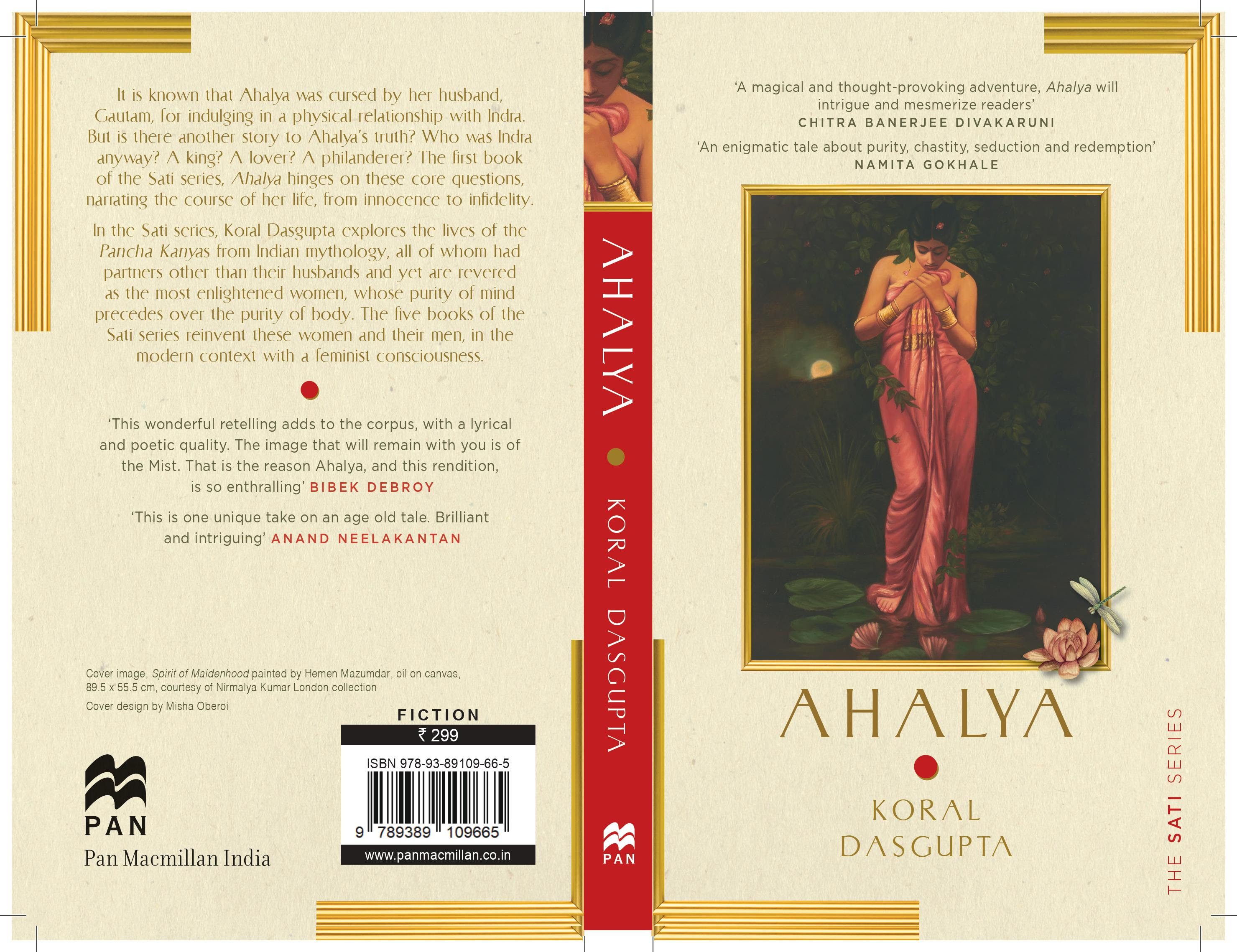
Book name: Ahalya | Author: Koral Dasgupta | Genre: Mythological Fiction | Publisher: Pan Macmillan India
Reading Indian mythology in the light of contemporary feminism unfolds the intricate layers of these texts. The subject of women and their bodies causes a lot of stir across dimensions and mythology is no exception. Rethinking an alternate idea around the topic was and probably will always be a challenge. However, author Koral Dasgupta, through her Sati series attempts to defy the clichés. The first book in the series – Ahalya is one such rendition that will leave the readers with delicate images of the characters thoughtfully constructed.
“My father [Brahma] called me his work of art. Hasn’t the world always attended with vengeance to every form of creativity that is beyond one’s comprehension?”
A soul witnessing her own body being sculpted for the lack of a mother, as Brahma explains, Ahalya sets out to find one in the River and the Rain – who refuses to mother Brahma’s daughter. It is the Mist that brings Ahalya motherly compassion throughout her transformation into ‘A seeker of truth. A follower of the divine.’ As Gautama brings Ahalya’s earthly form from paradise into his hut, speculation is intelligently designed by the author of her life ahead as a woman. With each step she forgets about her wanderings as a spirit; the erudition is stored deep somewhere in her subconscious only to surface in the latter part of her life.
The story has a lighter than air transition from one phase to the next, but for me, it is the definition of the characters, elements, and symbols in the book that marvel - the Kalpvriksha with a bluebird, the concoction of sandalwood, white stone, mahogany, rose petals and lotus leaves, the Mist as a shawl, aroma of wood and wild herbs, the yellow sari and the divine plays of Indra. These shall be imprinted on the reader’s mind, I can vouch.
Koral, boldly expresses the need for a woman’s body, wisely rubbing off the lines of moral and immoral nature that restrict her passion in a strikingly poetic manner.
‘I fantasized of a forbidden touch. I was standing at the threshold of a mysterious gate with a broken lock. Hesitant hands dared to push it open. A flood of glittering clouds formed a colourful hammock, inviting me to shed apprehensions and embrace the untamed. I closed my eyes to receive a kind, imaginary face with strong unrelenting hands pleasuring my lean built, his passion igniting the depths of my soul. Not a single person on Earth was aware of the explosion I felt within. I floated in the joy of discovering myself, far beyond the capacity of any great teacher to analyse or interpret. I touched myself with an urgency, to unravel the miracles that a body can bring to the mind. I felt with my hands the smooth skin and beyond, exploring myself a lot more than I ever did. A gentle press or a robust stroke invoked freedom of a different kind. No other knowledge, no experience, no wisdom had ever unravelled so much about myself to me as did this blasphemous plunge into self-indulgence. My heart though still remained barren.’
Ahalya’s union with Gautama by Brahma’s will appears deific and obnoxious at the same time. The readers might beseech a desire of change in the approach of the sage seen trying to unravel the paradox of time and wishing to gain control over his senses to attain immortality, upon this odd connection. The instinctive efforts Ahalya made to drift closer to Gautama and his eventual turnabout as a lover, and Indra’s intrusion are sensuously blended to fabric an intense tale of desire and sorrowful abandon.
The author remarkably points out the purity of mind over body and distinctly pronounces Ahalya as a Sati despite having a partner outside marriage. This age-old tale is retold from a contemporary perspective. The book gets philosophical at many places but it also leaves room for the readers to have their interpretations and angles. The beautiful golden cover showcasing the painting ‘Spirit of Maidenhood’ by Hemen Mazumdar perfectly relates to the story and Ahalya's character in the book. The retelling indirectly pinpoints many underlying concerns related to a woman’s sexuality probably existing since time. The readers when trying to spot Gautama in the Saptarishi constellation would think of Ahalya once, after reading this book.
Review by: Nazneen Kachwala
Leave a comment